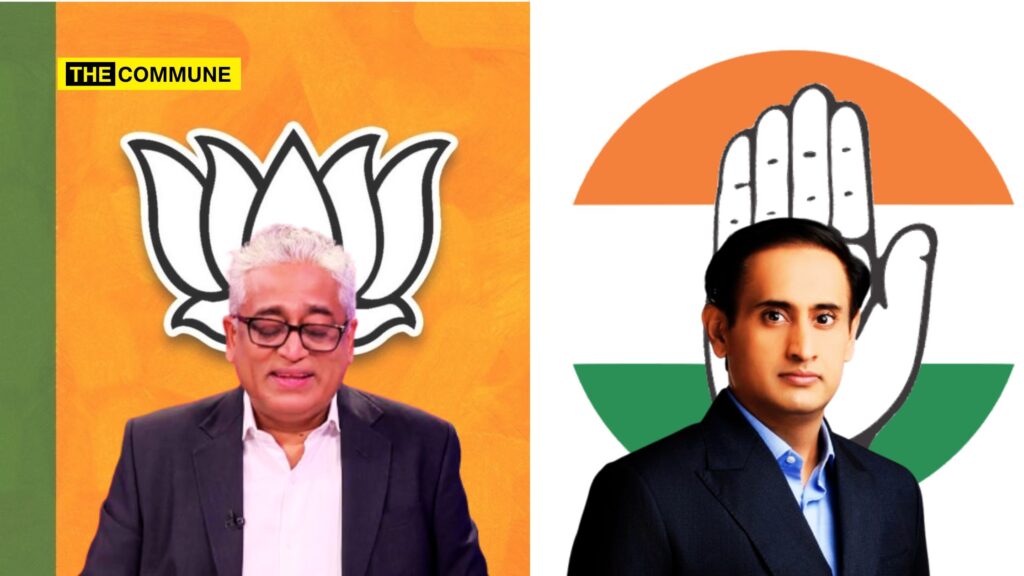Recent events have illuminated the contrasting approaches of Congress and BJP to handling media controversies and public apologies, revealing significant differences in their respective methods and attitudes towards democratic practices.
Congress’s ‘Democratic Model Of Press Freedom’
A recent controversy involving Congress and India Today anchor Rahul Kanwal illustrates how Congress approaches criticism by journalists.
According to Pawan Khera of Congress, Rahul Kanwal “met” with top Congress leaders, including the President and General Secretary of Media, Communications, and Publicity, to address concerns stemming from a controversial debate on his show involving remarks by a BJP spokesperson about former Prime Ministers Indira Gandhi and Rajiv Gandhi. The Congress party found these remarks disrespectful and offensive, leading to criticism of Kanwal’s handling of the discussion. Kanwal met with Congress officials to clarify his stance, distance himself from the contentious remarks, and reaffirm his commitment to responsible journalism.
The Congress party, satisfied with his clarification, has expressed readiness to resume participation in his shows.
Khera wrote on his X handle, “Mr @rahulkanwal met the Hon’ble Congress President, the General Secy Media, Communications and Publicity and the Chairman, Media, Communications and Publicity to clarify his position on the matter pertaining to the debate on Late Smt Indira Gandhi and Late Shri Rajiv Gandhi and dissociating himself from the obnoxious views expressed by the BJP spokesperson on that occasion. Having heard his point of view, we think it is time to move on and start participating in his shows.”
Mr @rahulkanwal met the Hon’ble Congress President, the General Secy Media, Communications and Publicity and the Chairman, Media, Communications and Publicity to clarify his position on the matter pertaining to the debate on Late Smt Indira Gandhi and Late Shri Rajiv Gandhi and…
— Pawan Khera 🇮🇳 (@Pawankhera) September 4, 2024
Critics see the Congress’s approach as an attempt to exert pressure and control over media figures, demanding clarification and apologies. This tactic raises concerns about the party’s willingness to use its influence to coerce public figures into compliance. Instead of resolving issues through dialogue and constructive engagement, Congress appears to use its authority to impose its stance, seemingly as a threat rather than a resolution invitation.
BJP’s ‘Dictatorial Model Of Press Freedom’
In stark contrast, the BJP demonstrates a more ‘democratic’ approach to media interactions, or as critics might call it, a soft-handed, submissive approach. Consider the case of Rajdeep Sardesai, who was involved in a controversy for allegedly insulting BJP spokesperson Shazia Ilmi. Despite a High Court ruling requiring the removal of Sardesai’s tweet, he did not issue a public apology. Yet, the BJP continues to engage in debates and discussions hosted by Sardesai.
Is the BJP projecting an image of dissociating itself from the issues its party members face? Are they left to fend for themselves? This response highlights the BJP’s soft or submissive approach that disregards the party members’ sentiments. Does the BJP’s decision to keep participating in Sardesai’s media platforms show tolerance for differing opinions? Or is it using the platforms to portray itself as a soft figure? Is it good to keep terming this benign approach as a masterstroke every time?
The contrasting strategies of Congress and BJP in handling media controversies highlight the different attitudes of both national parties.
While press freedom is vital to our democracy, critics believe holding the media accountable is essential. The press cannot get away quickly, especially when it spreads propaganda against the nation or the government to a global audience.
Subscribe to our Telegram, WhatsApp, and Instagram channels and get the best stories of the day delivered instantly.

